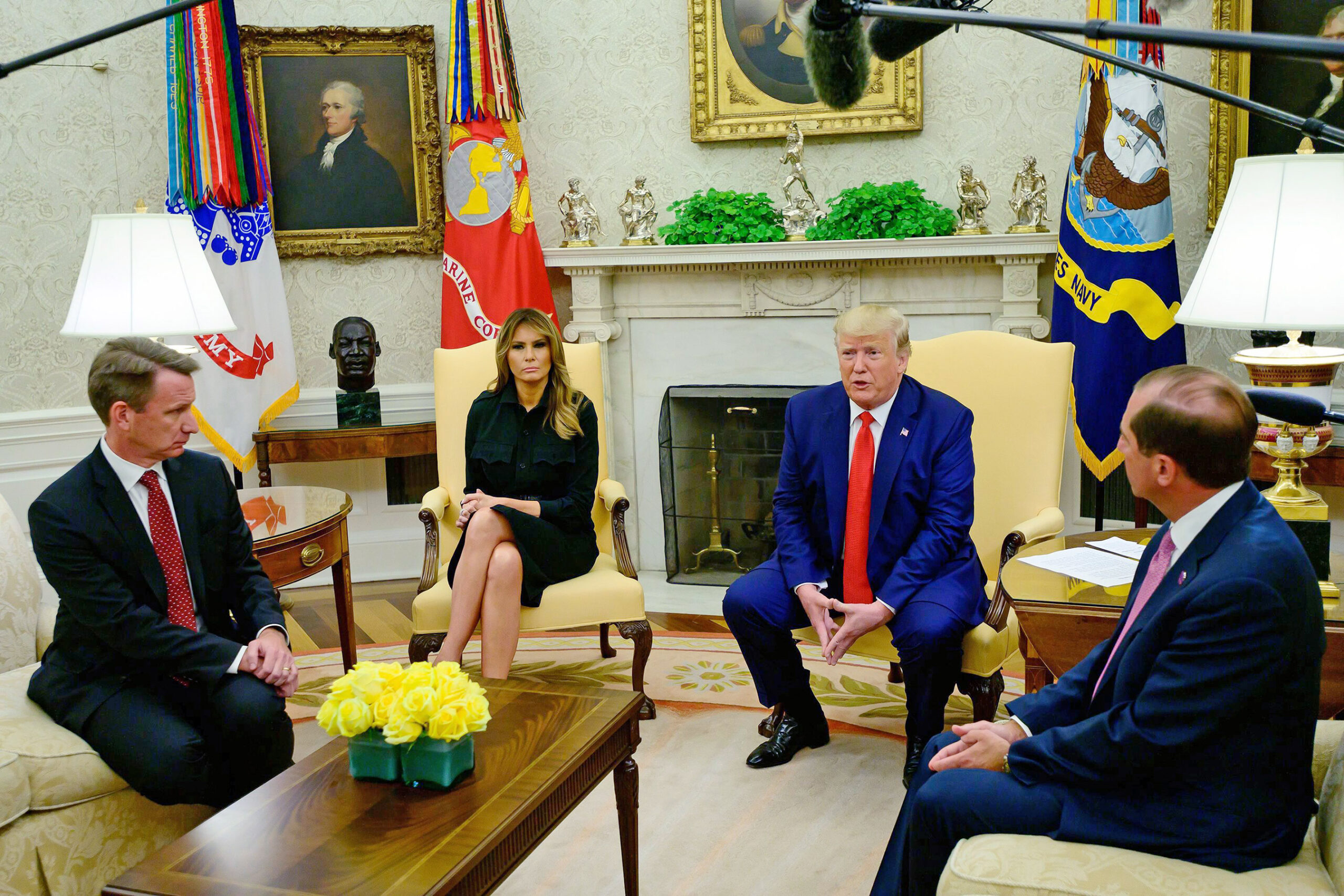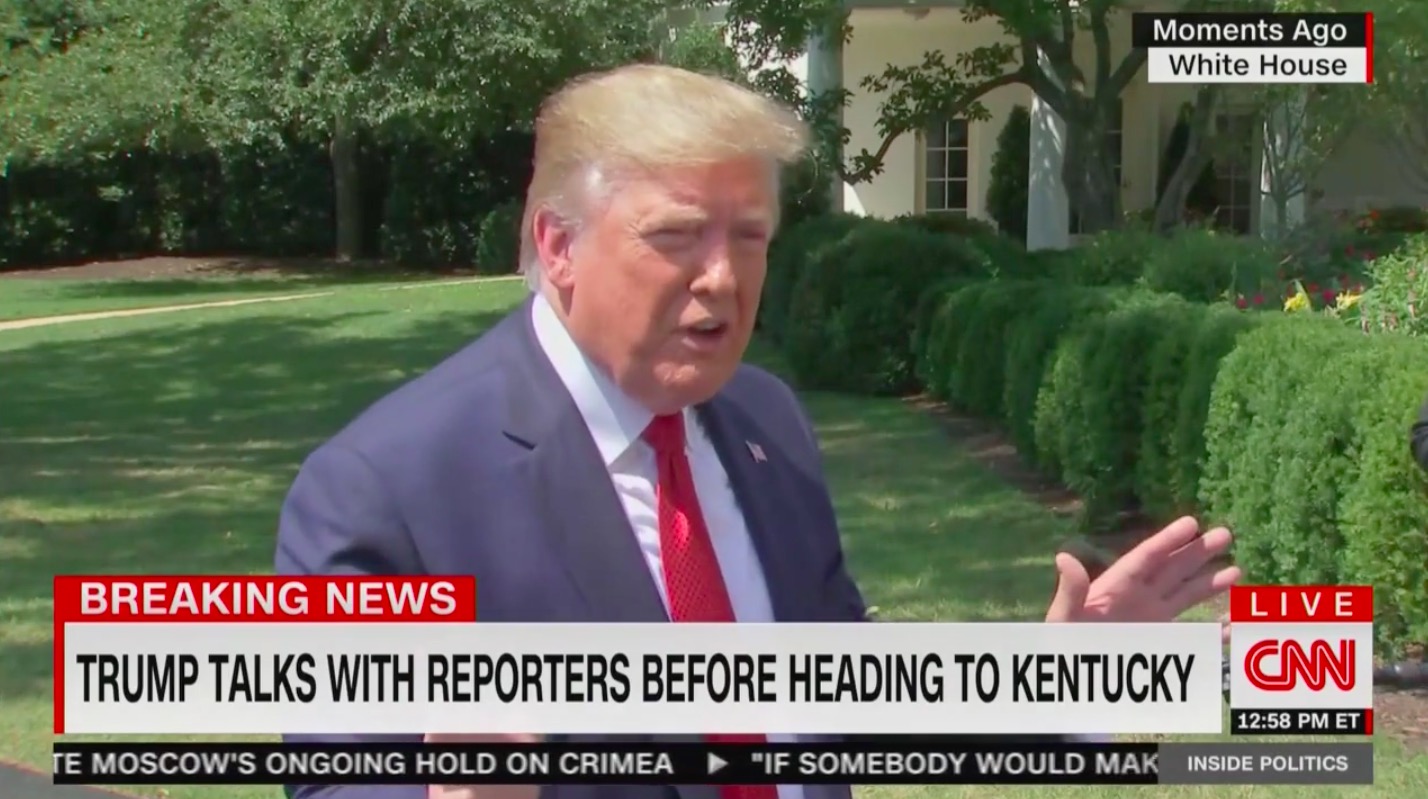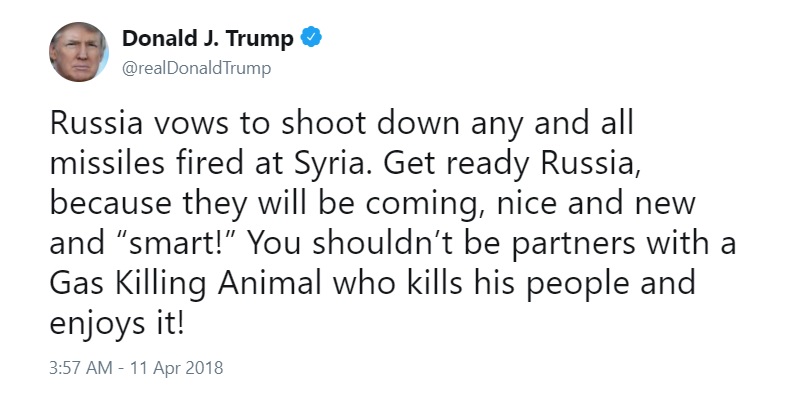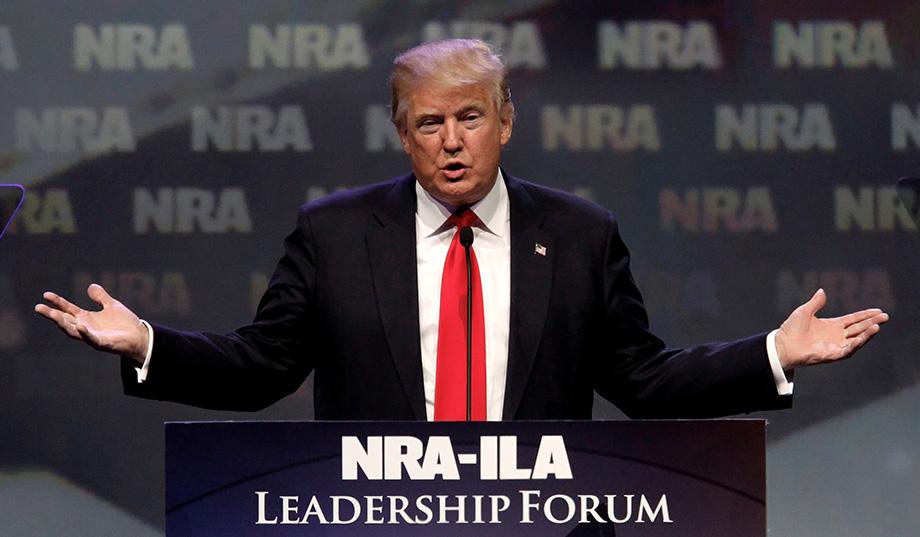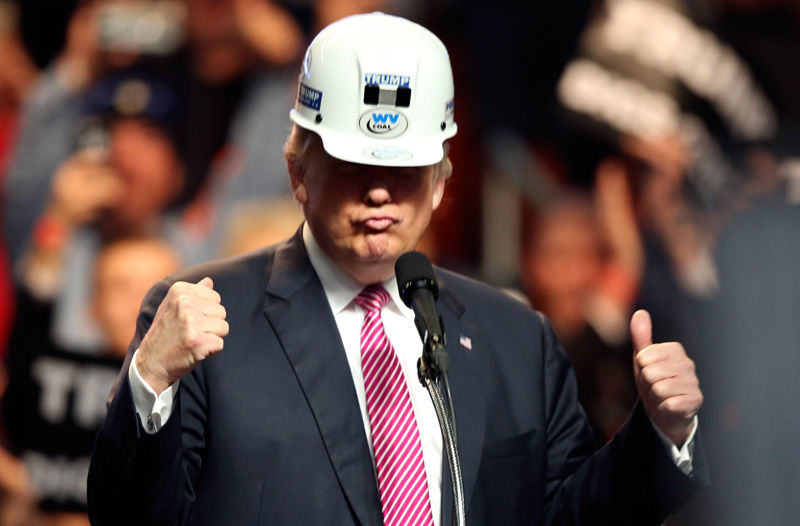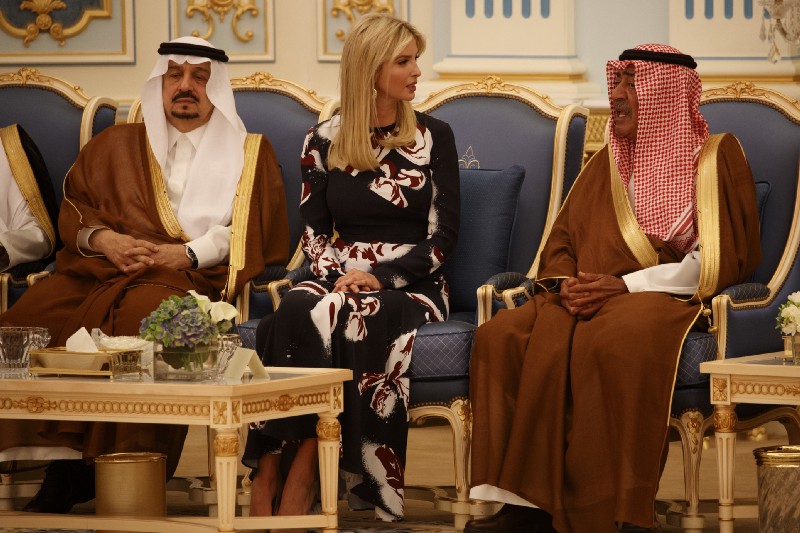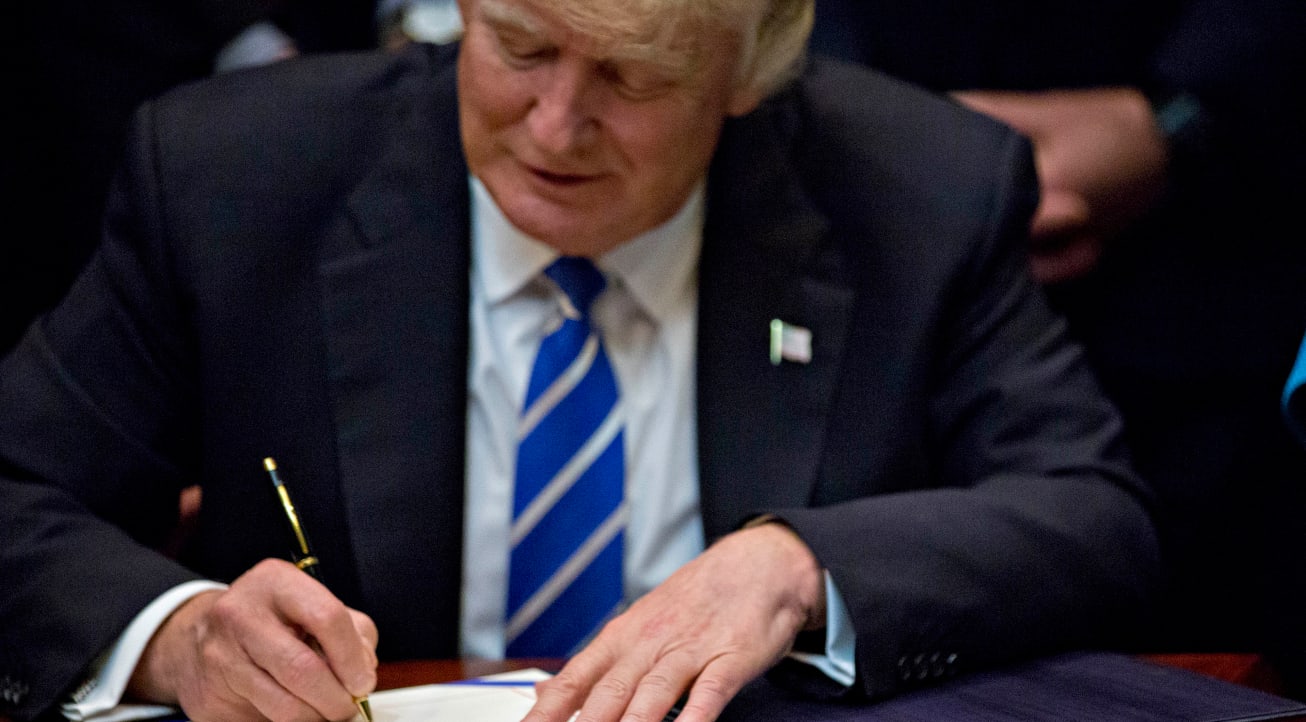Trump moves the coronavirus goal posts, pre-spinning 100,000 deaths as ‘a very good job’
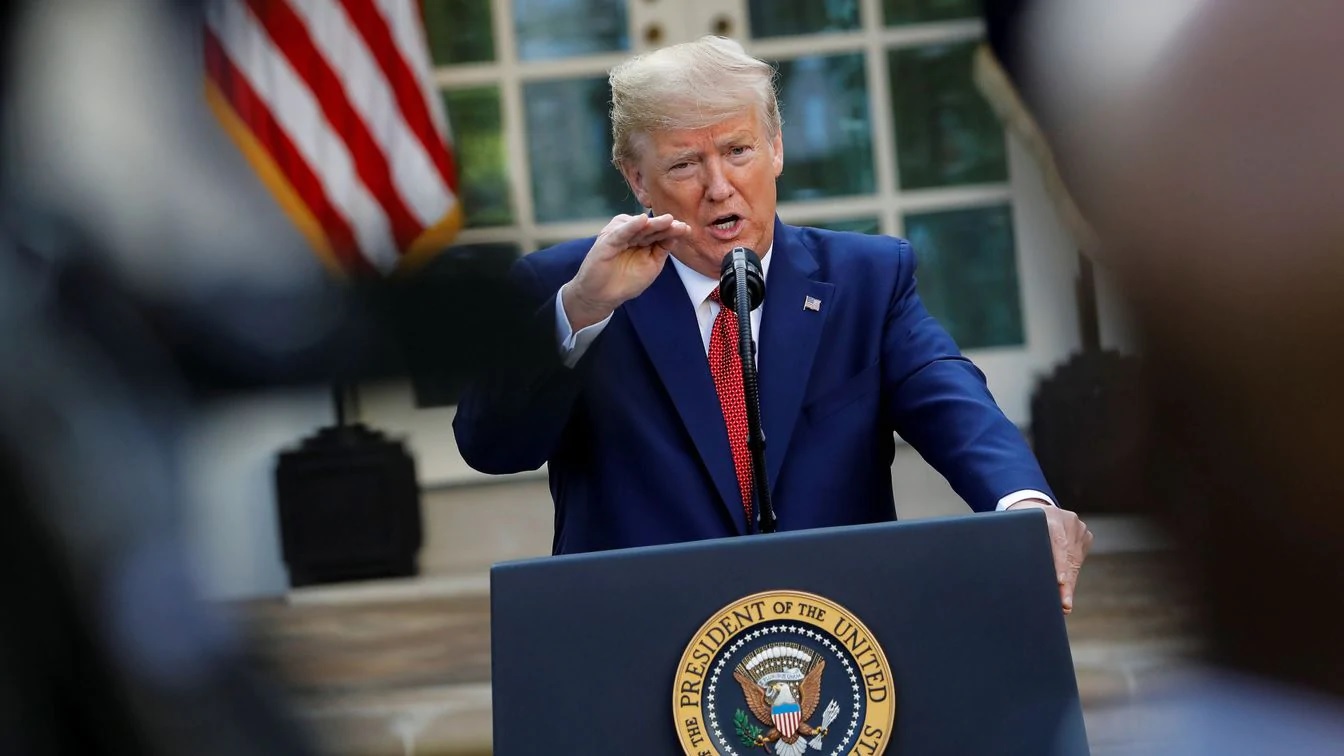
On Feb. 26, when there were 15 reported cases of the novel coronavirus in the United States, President Trump predicted the number of cases would soon be “down to close to zero.”
On March 5, he hailed the fact that there were about 3,000 deaths worldwide but only 11 in the United States.
On March 9, he noted that there were just 22 U.S. deaths and compared the virus to the seasonal flu, which has killed 37,000 people this year.
On March 13, he said the 2009 swine flu had killed 14,000 people in the United States and called the Obama administration’s response to it “a disaster.”
On Sunday night, the same president set the goal posts for his administration’s response to the coronavirus in a very different place. In a White House briefing in the Rose Garden, Trump referenced new data from his task force and said that between 100,000 and 200,000 deaths would represent a victory over the coronavirus.
In doing so, Trump seemed to suddenly embrace coronavirus projections that he had previously shrugged off and downplayed. Rather than put an optimistic spin on what lies ahead, he instead sought to use the most dire projections to pre-spin his administration’s response as a success.
As The Washington Post’s Philip Rucker reported, Trump pointed no fewer than 16 times to the most dire projections of 2 million or more U.S. deaths in the Sunday briefing. This was most prominently projected in an Imperial College London study that spurred a more aggressive response in the United States and Britain two weeks ago.
“So you’re talking about 2.2 million deaths, 2.2 million people from this,” Trump said. “And so if we could hold that down, as we’re saying, to 100,000 — it’s a horrible number, maybe even less — but to 100,000. So we have between 100 and 200,000, and we altogether have done a very good job.”
Trump added, “But to point to up to 2.2 million deaths and maybe even beyond that, I’m feeling very good about what we did last week.”
As The Post’s William Booth reported when the Imperial College London study came out, that 2.2 million figure was a worst-case scenario in which virtually no precautions were taken — and Trump, to his credit, acknowledged that at one point Sunday.
The number was halved if the two countries were more aggressive:If Britain and the United States pursued more-ambitious measures to mitigate the spread of the coronavirus, to slow but not necessarily stop the epidemic over the coming few months, they could reduce mortality by half, to 260,000 people in the United Kingdom and 1.1 million in the United States.
But it was significantly lower for Britain if the most aggressive steps were taken:Finally, if the British government quickly went all-out to suppress viral spread — aiming to reverse epidemic growth and reduce the case load to a low level — then the number of dead in the country could drop to below 20,000. To do this, the researchers said, Britain would have to enforce social distancing for the entire population, isolate all cases, demand quarantines of entire households where anyone is sick, and close all schools and universities — and do this not for weeks but for 12 to 18 months, until a vaccine is available.
As Booth noted, the model didn’t provide a number for the United States in the case of the most aggressive response. But if you apply the same percentage-wise decline to both Britain and the United States — as the study did between the worst-case scenario and the middle option — it would be about 85,000 deaths in the United States. That’s pretty close to what Trump is now aiming for.
Whether that would actually be the victory that Trump says it would be is subjective. But it’s notable that he’s now playing up those projections, after he spent the initial weeks of the outbreak suggesting the situation was “under control” and floating the idea that the virus could suddenly, miraculously disappear. The number of deaths he’s now talking about would be substantially higher than the seasonal flu and swine flu numbers he has repeatedly compared the current situation with — and in the latter case argued signified a failed response.
The swine flu, of course, was significantly less deadly than the coronavirus. But that didn’t stop Trump from making a comparison that has now turned out to be rather shortsighted. The flu comparison also was faulty from the start because the mortality rate and the transmission rate have been shown to be substantially lower.
The problem with setting the goal posts for your own success in the middle of a crisis is that there is so much you don’t know, and you can wind up setting an expectation that will later suggest you didn’t take things seriously enough or that your response was a failure. But Trump did it again Sunday — albeit in a significantly less optimistic way.
